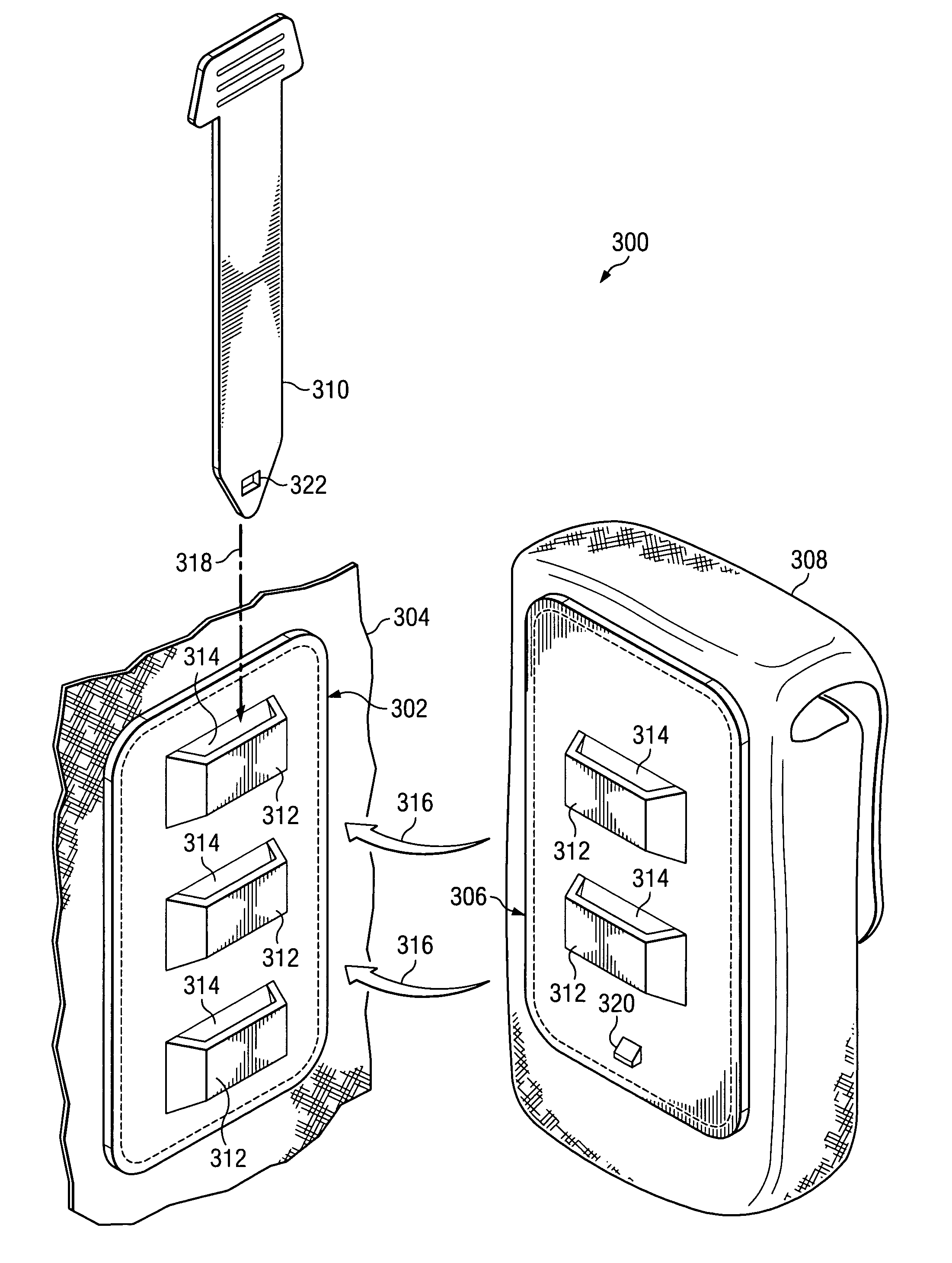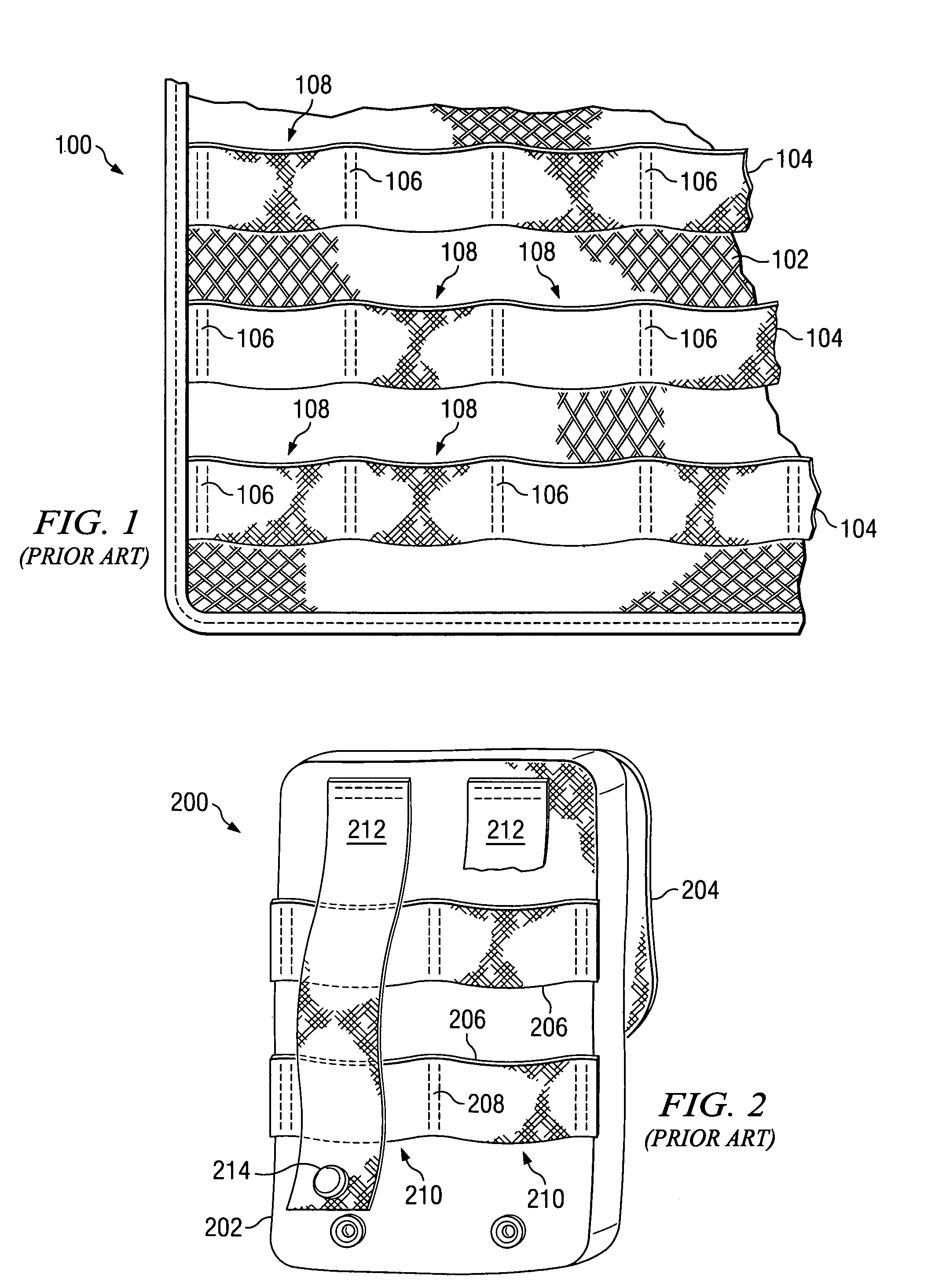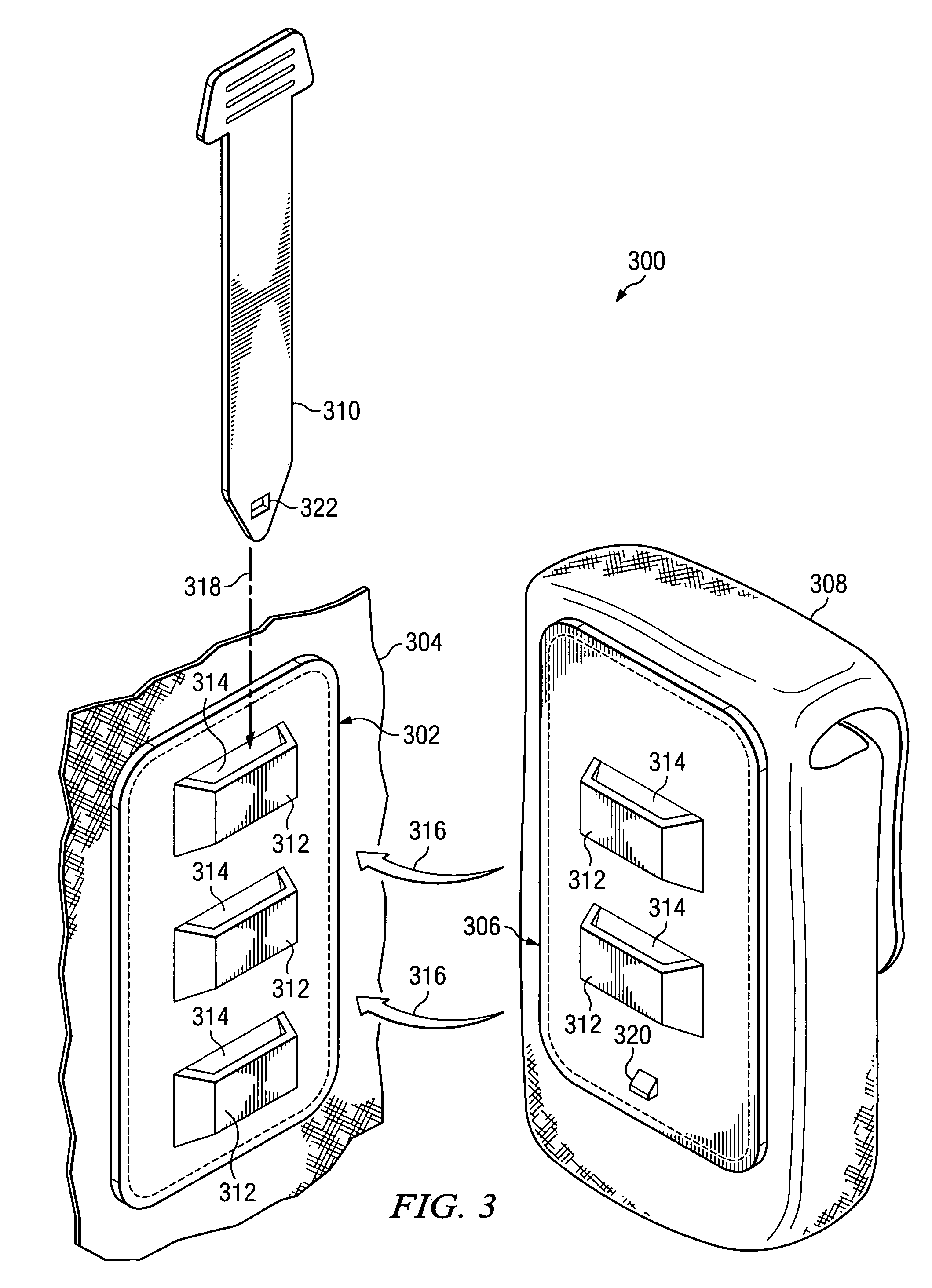Quick-mount interlocking attaching system
a technology of interlocking and attaching system, which is applied in the direction of travel carriers, protective garments, scarfs, etc., can solve the problems of high post-manufacturing rejection rate, high number of potential failure sites associated with prior art webbing-type systems, and the rejection of rejected products. , the value of the rejected product is typically not salvageabl
- Summary
- Abstract
- Description
- Claims
- Application Information
AI Technical Summary
Benefits of technology
Problems solved by technology
Method used
Image
Examples
Embodiment Construction
[0053]The subject matter of the present invention will be particularly pointed out in the appended claims. For a better understanding of the present invention, its various objects and advantages, reference is made to the following detailed description taken in conjunction with the accompanying drawings.
[0054]Referring now to FIGS. 1 and 2, there is illustrated a prior art interlocking system of the webbing type for attaching accessory objects to a substrate garment. FIG. 1 illustrates a portion of a load bearing vest 100, which in this case is the substrate object adapted to use the prior art attachment system. The vest 100 includes a mesh body 102 which allows air to circulate to the wearer. The vest 100 is adapted to use the prior art attachment system by the addition of narrow strips of webbing 104 attached in parallel bands across its surface. The webbing 104 is attached to the vest body 102 with a series of tack stitches 106 which run perpendicular to the webbing and are spaced...
PUM
 Login to View More
Login to View More Abstract
Description
Claims
Application Information
 Login to View More
Login to View More - R&D
- Intellectual Property
- Life Sciences
- Materials
- Tech Scout
- Unparalleled Data Quality
- Higher Quality Content
- 60% Fewer Hallucinations
Browse by: Latest US Patents, China's latest patents, Technical Efficacy Thesaurus, Application Domain, Technology Topic, Popular Technical Reports.
© 2025 PatSnap. All rights reserved.Legal|Privacy policy|Modern Slavery Act Transparency Statement|Sitemap|About US| Contact US: help@patsnap.com



